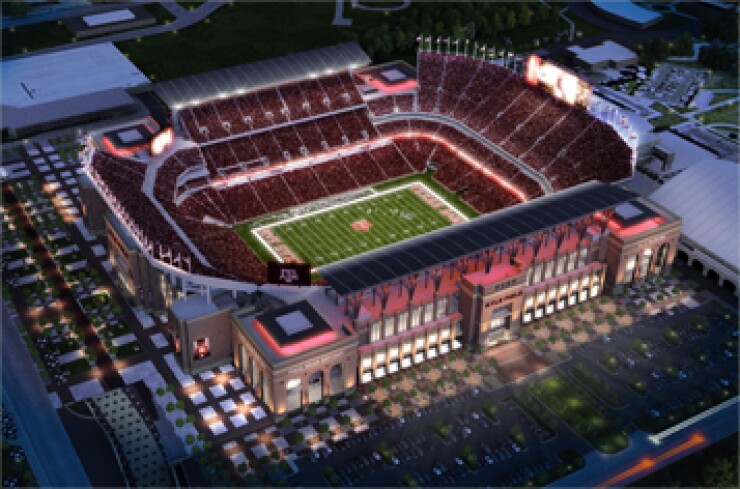
DALLAS — Major colleges and universities face growing risks after boosting subsidies for sports programs by 25% over the last five years, according to a report from Moody's Investors Service.
The report, "Eye on the Ball: Big-Time Sports Pose Growing Risks for Universities," found that about 90% of Division I athletic programs are not self-sustaining and can siphon funds from other university operations.
"On an average basis, the athletic operating expenses of Division I universities have nearly doubled since 2004 compared to 58% for total expenses," wrote Moody's senior analyst Dennis M. Gephardt.
"The operations of athletic systems can be volatile with uptick sometimes driven by outsized expenses such as paying penalties as a result of NCAA sanctions or paying a new high-profile head coach along with one who was dismissed but is still paid in order to fulfill his or her contract," Gephardt noted.
The risks go beyond the financial and include reputational risks if a program become embroiled in scandal, analysts said.
Other risks include potential litigation over head injuries and possible movement away from the amateur athlete model, they added.
A series of conference realignments reflect the growing competition for students and money from television contracts, analysts said.
Texas A&M University launched its $450 million stadium expansion after the university switched from the Big 12 to the Southeast Conference.
The university issued $350 million of revenue bonds for the project in September. It is expected to be finished in 2015.
With a capacity of 102,500, Texas A&M's expanded Kyle Field will rank as the largest in the SEC, just 45 seats more than the University of Tennessee's remodeled Neyland Stadium in Knoxville.
Moody's analysts noted that universities are willing to pay large penalties for a conference switch that provides a higher media profile.
West Virginia University, rated Aa3 with a stable outlook by Moody's, paid $20 million to leave the Big East Conference and join the Big 12. The university will receive an annual media rights revenue distribution of about $20 million, which is significantly higher than the annual payout to universities in the Big East.
Much of the excitement at Texas A&M is based on the fortunes of one player, Heisman-trophy-winning quarterback Johnny Manziel. If Manziel were to suffer a season-ending injury, the impact on attendance and interest in the team could be at risk.
"While budgets for intercollegiate athletics already incorporate the costs of near-term injuries to student-athletes, the longer-term costs of injuries are uncertain," the Moody's report said. "Changing standards around the treatment of football head injuries could increase the costs of college football programs. The NCAA is subject to litigation risk related to concussions sustained by former student-athletes with potential financial consequences for the association."
Another risk to college sports programs is a legal challenge to the athletes' status as amateurs.
Plaintiffs in a case known as the NCAA Student-Athletes Name & Likeness Licensing Litigation or O'Bannon v. NCAA, filed in July 2009, contend that the NCAA acts in violation of The Sherman Antitrust Act and improperly licenses the players' likenesses and violates the players' right of publicity.
"While the case initially involved only former players, the related credit risk to the NCAA and its members would increase if it were to incorporate current players as well as broaden claims on revenues related to the media and licensing revenue driven by student-athlete competition," the report said.





